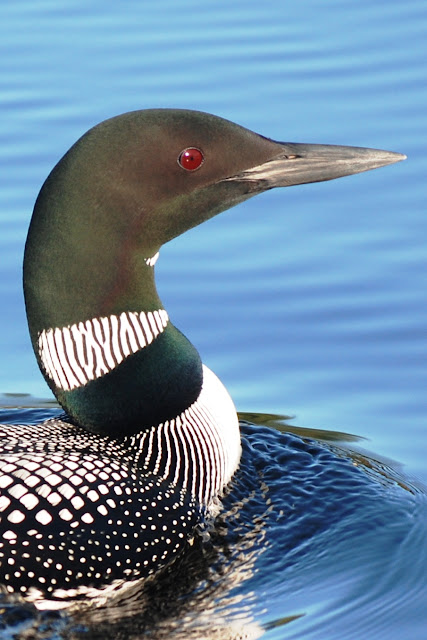 |
| Angler Doug Billings brings his own PFD |
When you see Bow Narrows Camp staff operating a boat this summer or if you see a Ministry of Natural Resources conservation officer or meet officers in a police boat, notice that they are all wearing PFDs -- personal floatation devices.
Then check out most of the anglers at camp, especially the most-experienced ones -- same thing, all wearing PFDs.
PFDs are better known as life vests but it is technically incorrect to refer to them as life jackets although that is exactly what most people call them. The difference seems subtle -- life jackets have the ability to turn an unconscious person right side up. PFDs keep you afloat but you may need to initially turn yourself face up.
PFDs are typically comfortable vests. Life jackets are typically uncomfortable, cumbersome collars.
In the Lickety Split, our big boat used to carry guests to and from camp, people sitting on the deck behind the cabin are required to wear PFDs. Inside the cabin it is safe operating procedure not to wear them because it could hinder your ability to get outside if the boat was to capsize.
I just finished completing the Small Vessel Operator Proficiency course now required for small commercial vessels where I learned that about 200 people drown annually in Canada. More than 80 per cent of these are recreational boaters and virtually all of them don't wear PFDs.
If you are wearing a PFD or a life jacket, you just about always survive a boating accident. If you aren't wearing a PFD, you stand a good chance of drowning, even from the most commonplace boating mishaps.
Here is how a boater usually ends up in the water: his boat strikes an object and he is either thrown overboard and/or the boat is flipped over. This all will take place in less than one second. Obviously, there is no time to put on a PFD while the event is occurring.
Here is the myth most people have about boating accidents: their boat springs a leak and eventually sinks, giving them plenty of time to put on their PFD. The reality is recreational boats never sink; they have built-in floatation.
It can't happen to me
Do you not wear a PFD because you have never needed one in the past? The problem with this logic is that there are things in life where you only get one chance, where you don't get to learn from trial and error. Think gun safety or chainsaw operation. It's the same thing with not drowning. This is the real world, not some computer game.
I'm a good swimmer
It doesn't matter if you hold an Olympic gold medal, your ability to swim isn't even going to be a factor. Most people drown in the first few seconds. The sudden and unexpectedness of the event and sometimes the cold temperature of the water makes you gasp involuntarily. You inhale water into your lungs. If you are wearing a PFD or life jacket, you instantly are back on the surface where you can cough up the water. If you aren't, it's all over, just like that.
I don't want to look stupid
How do you think you will look drowned? Smart? The truth is you look stupid when you don't wear a PFD. It shows you are naive, inexperienced and unprepared. When you are in the great outdoors, you need to be self-reliant and that means recognizing dangerous situations and being prepared.
PFDs are uncomfortable
Frankly, that's bull----. But if your body really is so sensitive that wearing a typical PFD causes you discomfort, then it is your responsibility to find one that does not. At Bow Narrows Camp we provide normal vest-type PFDs for everyone. There are plenty of other types that you might find more comfortable. These include kayaking vests which typically leave the shoulders bare. There are also the inflatable PFDs. Actually, some of these qualify as life jackets. These look like wide suspenders. They have a CO2 cartridge that inflates when immersed beneath the surface or you can pull a cord and inflate them manually. These cost about $150. Too expensive for you? Your life isn't worth that much?
Personally, I always wear a recreational boater PFD but it has mesh over the shoulders, something like the kayaking model. It's like the one Doug is wearing in the photo above. If the weather is hot, I just slacken the straps so air circulates better. If it is cold, it feels great as extra insulation against the wind.
You need to shop around and find the PFD that is best for you. Maybe you are extra large or extra small.
Women have a legitimate complaint with standard PFDs. The problem is standard PFDs are too tall for many of them. When they sit down the PFD comes up around their ears. One answer is kayaking models. These are made short for kakayers who are always sitting down and need great movement through the shoulders.
Fishing season hasn't started yet. Now is the time to go shopping for a PFD that you like and will always wear when in a boat. Not only will you look smart, you actually ARE smart.
Click to go back to our
website
Click to see the latest on the
blog




















